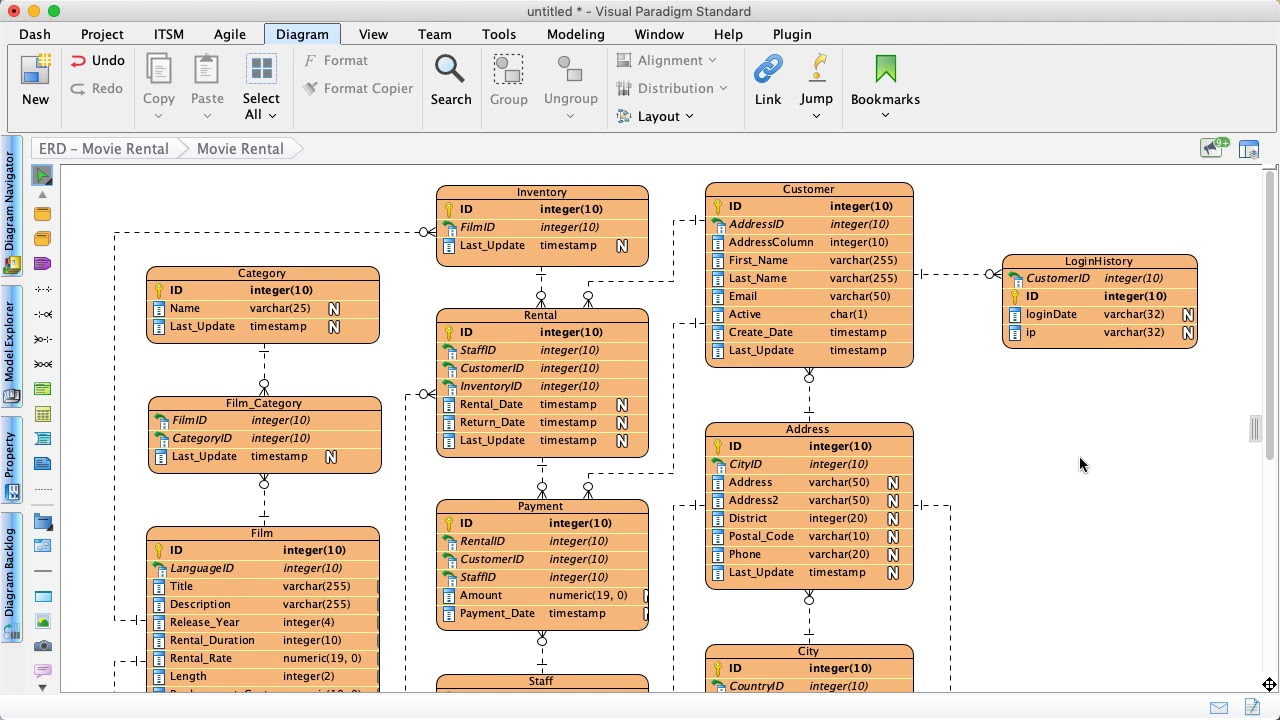
- RAILS GENERATE DBSCHEMA DIAGRAM FROM SCHEMA.RB UPDATE
- RAILS GENERATE DBSCHEMA DIAGRAM FROM SCHEMA.RB CODE
The last gem I’m going to mention is simplecov and the main function of it is to check what have you tested under your tests files and what you’re missing, it’s great because sometimes you forget to test some model methods or you forget to test one association and that’s when simplecov comes in handy because everytime you run specs you’ll see new files under coverage folder which contains the hmtl view of the simplecov generated results. It’s really useful because sometimes when you have a lot of models, sometimes you get confused on the associations and even though you should have an ERD created before starting to code, having a gem that generates an ERD can help you see if you associated something wrong in the actual program. The third gem is called rails-erd which generates an entity relationship diagram based on you current models. When you’re not using this gem what you would normally do is to go under db/schema.rb which is more time consuming than having those comments under the model. The second gem I would like to talk is one that is called annotate, the functionality of this gem is to show under your ruby classes a comment summarizing the current schema.īy just using the command $ annotate, you’ll get your models, models specs and factories commented at the beginning with the current schema like this:Īs you can see this is very useful because when you’re creating the model logic, sometimes you forget which are the name of the columns that your current model has, so it’s pretty cool to have that feature. It’s a must have gem for developing a regular app on Rails, it is an authentication app that is composed of 10 modules, which each gives a different functionality and not all of them are required, for example the Omniauthable module is for authenticating using third party providers, so it’s not an essential module which you can choose not to use it.įor me it makes life easier cause when using it, you’re pretty sure you are going to have an authentication logic that is going to be pretty solid and it’s going to reduce your work a lot cause you don’t have the need anymore to build an authentication from scratch.įor API only application devise does not has support out of the box for JWT, so you have to implement that by yourself, or try to use this gem. After searching through activerecord's source code, I confirmed my thoght: db:migrate will check schema_migrations table to determine which migration files have been run and which not.In this post I would like to talk about some gems I consider useful when developing a Rails Project, they make development easier, which is the Ruby philosophy, make the programmer happy and productive. Truth can be found in one place: the code. However, that has been already changed, and now db:migrate does not decide which file should be run based on that version anymore.

If answers and replies in this question are correct, it seems like db:migrate used to assume that all migrations up to the version in schema.rb are applied, and will not run new migration files with older version. db:migrate will generate or modify it, but it should not affect how db:migrate run. It's just like what I see about schema.rb: just a file to store current table structure of your database.
RAILS GENERATE DBSCHEMA DIAGRAM FROM SCHEMA.RB UPDATE
Note that running the db:migrate command also invokes the db:schema:dump command, which will update your db/schema.rb file to match the structure of your database.
RAILS GENERATE DBSCHEMA DIAGRAM FROM SCHEMA.RB CODE
Old migrations may fail to apply correctly if those migrations use changing external dependencies or rely on application code which evolves separately from your migrations. It tends to be faster and less error prone to create a new instance of your application's database by loading the schema file via bin/rails db:schema:load than it is to replay the entire migration history.

The first place to look is always the official guide.īy default, Rails generates db/schema.rb which attempts to capture the current state of your database schema. Now, out of curiosity, I want to look more into this matter. We didn't have much time to talk about it considering that it's not really important, so I just change the migration file name, run db:migrate again in my local to update the version and commit it.

However, as I understand rails db:migrate does not care about the version in schema.rb, it only compares the version list in db/migrate folder and version list in schema_migrations table, and run any migration that has not been run. My colleage insists that anytime you commit a new migration file, the schema.rb version needs to be updated too, or rails db:migrate will not run that migration file in other environments.

In my feature branch, I added a migration file with version older than the latest version in main branch, so when I run db:migrate, the version in schema.rb is not updated. This week, I had an argument (a healthy one 😗) at work about the version in Rails' schema.rb.


 0 kommentar(er)
0 kommentar(er)
